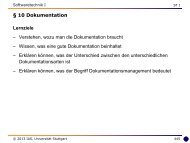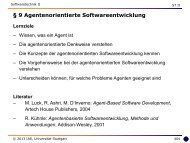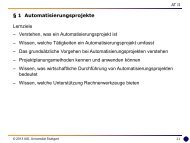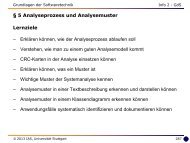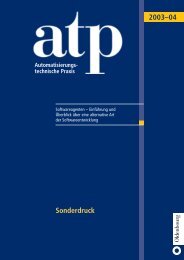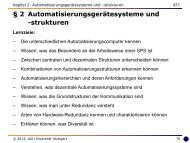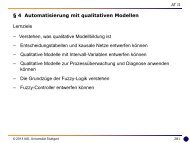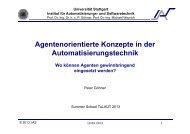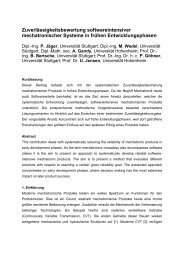Grundlagen FlexRay - Institut für Automatisierungs- und ...
Grundlagen FlexRay - Institut für Automatisierungs- und ...
Grundlagen FlexRay - Institut für Automatisierungs- und ...
Create successful ePaper yourself
Turn your PDF publications into a flip-book with our unique Google optimized e-Paper software.
<strong>Gr<strong>und</strong>lagen</strong> <strong>FlexRay</strong> BasicsV 1.1 37<br />
2.13 Protocol Data Unit<br />
Protocol Data Units (PDU) are bus-independent data units, consisting of protocol data and<br />
payload, which are processed by the layers of the protocol stack A PDU can consist of a<br />
single signal or multiple signals. It has its own timing, and is able to show if its data is valid<br />
by using an update-bit.<br />
Figure 2.33 Overview of PDUs [VeSc11]<br />
In AUTOSAR, there are different PDUs for each OSI-Layer (see Figure 2.33):<br />
• I-PDU – Interaction Layer PDU, can consist of one or more signals, has its own<br />
Update Bit.<br />
• N-PDU – Network Layer PDU (optional)<br />
• L-PDU – Data Link Layer PDU are the equivalent to Frames. They can contain one or<br />
more I-PDU. It is possible to split up a single I-PDU between multiple L-PDU<br />
Since FIBEX Version 3.0 I-PDUs are supported, but there is no definition for N- <strong>und</strong> L-<br />
PDUs.<br />
Using PDUs offers a lot of advantages. The receiver only has to process the data, if the<br />
corresponding Update-Bit is set. Since otherwise the data has not been refreshed yet, or is<br />
invalid. This saves processing power. It is also possible to have an easier structure for data.<br />
Also, the data is directly provided, and it isn’t necessary to search for it in the frame.<br />
Bäurle 12.10.2012




